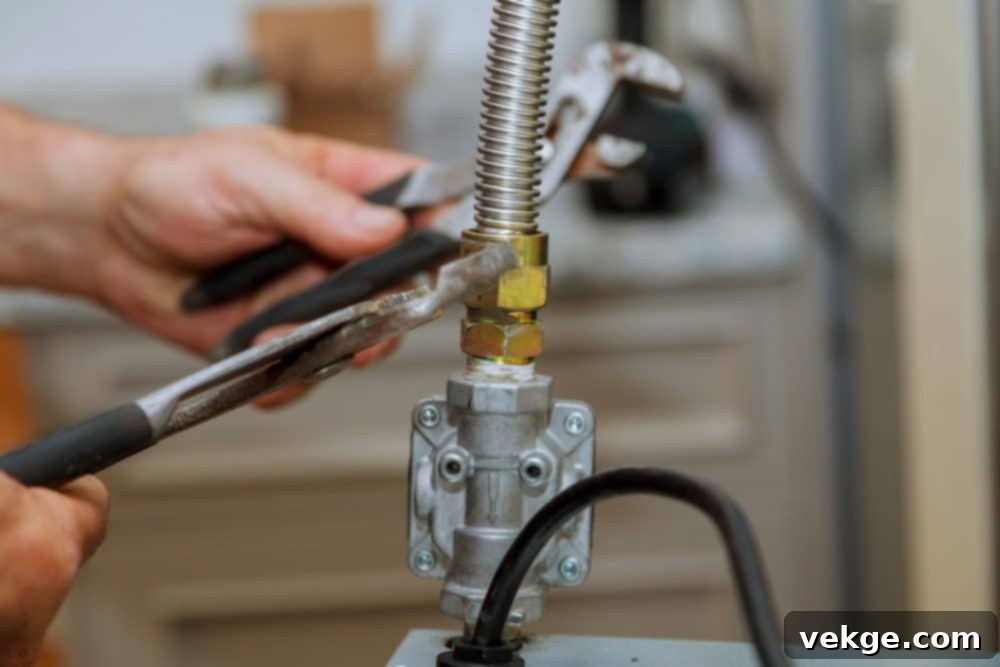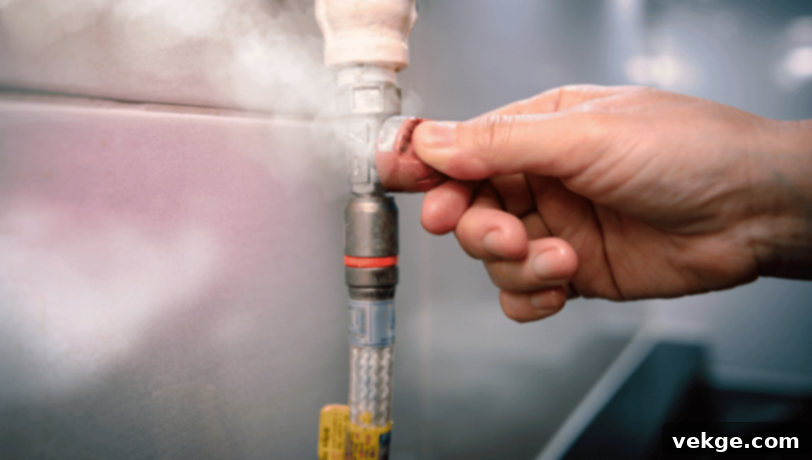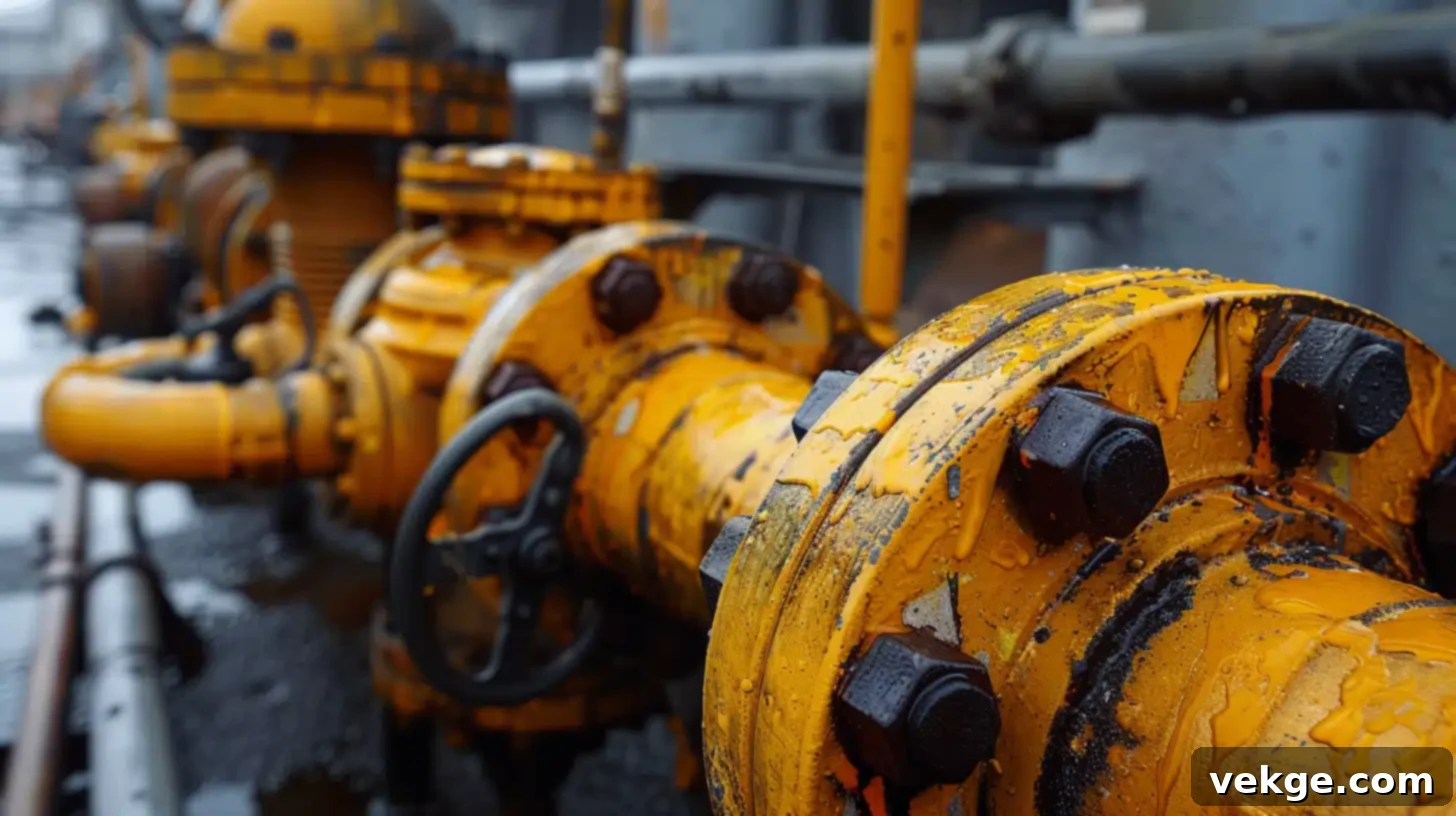Detecting Gas Leaks: Your Ultimate Guide to Identifying Warning Signs and Ensuring Home Safety
For any homeowner, the thought of a gas leak is a significant concern. While often unseen and unheard in its purest form, an undetected and unaddressed gas leak can lead to severe consequences, ranging from serious health issues for your family to extensive damage to your property. Natural gas, though a vital energy source for heating and cooking, can become a dangerous hazard if not contained properly. Its explosive potential and the risk of asphyxiation make early detection paramount for the safety and security of your household.
Empowering yourself with knowledge about the common warning signs of a gas leak is the first and most critical step in safeguarding your home and loved ones. Understanding these five key indicators will not only help you identify a potential problem quickly but also enable you to take swift, life-saving action. Whether you are a seasoned homeowner or new to managing a property, these essential tips are designed to refresh your awareness and help you maintain a safe and healthy living environment. Staying vigilant is not just about peace of mind; it’s about active protection.
1. Physical Symptoms: The Body’s Alarm Bells

Exposure to natural gas, or more critically, the carbon monoxide (CO) that can result from incomplete combustion in gas appliances, can have immediate and noticeable effects on human health. If you or members of your household suddenly experience unexplained physical symptoms, especially when inside your home, a gas leak should be considered a potential culprit. Being acutely aware of these signs can prompt you to act quickly and potentially prevent a more severe situation:
- Headaches: Persistent or throbbing headaches, particularly those that appear or worsen when you are at home and subside when you leave, are a common red flag.
- Dizziness and Lightheadedness: Feeling unusually dizzy, unsteady, or lightheaded without a clear medical explanation could indicate gas exposure affecting your central nervous system.
- Nausea and Vomiting: Sudden onset of nausea, stomach upset, or vomiting can be a symptom of gas inhalation, often mistaken for flu or food poisoning.
- Unusual Fatigue or Drowsiness: Experiencing unexplained exhaustion, profound tiredness, or difficulty staying awake, even after adequate rest, might signal that gas is impacting your body’s oxygen supply.
- Breathing Difficulties: Shortness of breath, a feeling of tightness in the chest, or other respiratory discomfort can occur as gas displaces oxygen in the air you breathe.
- Irritation of Eyes, Nose, or Throat: Some components of natural gas or combustion by-products can cause irritation to mucous membranes.
- Confusion or Memory Problems: In severe cases, particularly with carbon monoxide poisoning, cognitive impairment such as confusion, disorientation, or difficulty concentrating can manifest.
It’s crucial to understand that these symptoms are often subtle and can mimic other common illnesses. If multiple people in the household experience similar symptoms simultaneously, or if symptoms improve when you leave the house and return when you re-enter, the likelihood of a gas leak or carbon monoxide issue increases significantly. If you or your family members experience any of these symptoms, prioritize getting everyone out of the house into fresh air immediately. Once at a safe distance, contact your gas retailer or emergency services to report a possible leak and request an inspection. Additionally, integrating these observations with essential gas safety tips from licensed gas plumbers can further enhance your home’s safety protocols.
2. Unusual Smells: The Distinctive “Rotten Egg” Odor

Perhaps the most widely recognized and crucial warning sign of a natural gas leak is its characteristic odor. In its pure state, natural gas is naturally odorless, colorless, and tasteless, making it incredibly difficult to detect without additives. To ensure public safety and facilitate early detection of leaks, gas suppliers intentionally add a chemical compound called mercaptan to the gas supply. Mercaptan is specifically chosen for its strong, pungent, and highly distinctive smell, which is often described as resembling rotten eggs or sulfur.
This deliberate addition transforms natural gas into a readily identifiable hazard. If you ever detect this unmistakable rotten egg smell, whether faintly or strongly, inside your home, near a gas appliance, or anywhere on your property, it is a definitive indicator of a potential gas leak. Do not ignore it, even if you think it’s just a fleeting whiff. It’s imperative to act immediately: open windows and doors to ventilate the area, and most importantly, avoid using any electrical appliances, lights, or open flames, as even a small spark can ignite escaping gas. Promptly evacuate your home, ensuring all occupants, including pets, are safely outdoors and away from the property. Once at a safe distance, contact your gas supplier or emergency services right away. Trust your nose; being aware of this telltale sign is often the quickest way to detect gas leaks early and protect the wellbeing of your household members.
3. Hissing or Whistling Sounds: Auditory Clues to Escaping Gas
Another unmistakable auditory indicator of a gas leak is the presence of unusual hissing or whistling sounds near your gas lines, meters, or appliances. These distinct noises are produced when natural gas escapes from a compromised pipe, valve, or fitting under pressure. The sound can vary in intensity, from a faint hiss that might be barely perceptible to a much louder whistle or roar, depending on the size of the leak and the pressure of the gas.
It’s vital to pay close attention to the sounds emanating from areas where gas is transported or used. Specifically, listen for these noises around your gas stove, oven, water heater, furnace, clothes dryer, or gas fireplace. Also, check the external gas meter and any visible gas lines running into or around your home. A persistent hissing or whistling noise is a strong suggestion that gas is actively escaping into the atmosphere, posing an immediate risk. Just as with detecting a gas leak by its smell, if you hear any such sound, immediate and decisive action is critical. The same safety protocols apply: refrain from operating any electrical devices, switches, or open flames, as these could easily provide an ignition source. Evacuate your home without delay and contact your gas supplier or emergency services as soon as you are in a safe location. Maintaining an acute awareness of these specific sounds can help you identify a gas leak early, empowering you to protect your home and family from potential danger and ensuring a rapid, safe response.
4. Dead or Discoloured Vegetation: A Silent Outdoor Indicator
While often overlooked, changes in your outdoor landscaping can provide a critical clue to an underground gas leak on your property. Natural gas escaping from buried pipes can have a detrimental effect on plant life, leading to dead or discolored vegetation in specific patterns. This occurs because gas displaces oxygen in the soil, suffocating plant roots and preventing them from absorbing essential nutrients and water. Eventually, this lack of oxygen causes plants to wither and die.
Keep a keen eye out for unusual patches of dead or dying grass, wilting or stunted plants, or discolored foliage on trees and shrubs, particularly if these changes occur near your gas line, meter, or any areas where gas pipes are known to run underground. Look for irregular patterns of yellowing or browning that don’t match typical seasonal changes, drought conditions, or localized pest infestations. If you notice a thriving lawn suddenly developing dead spots or otherwise healthy plants inexplicably dying in specific areas, especially without any other clear cause, these could be strong indicators of a gas leak beneath the surface. Regular inspections of your yard, especially along the path of your main gas supply line, can help you spot these subtle yet serious warning signs. If you identify any suspicious signs of vegetation damage, take them seriously and contact your gas supplier immediately for urgent confirmation and remediation. Being proactive about monitoring your garden can help you detect elusive gas leaks early, keeping your home and family safe from potential hidden hazards.
5. Unexplained Gas Bill Rises: Financial Clues to Hidden Leaks
One of the more indirect yet equally important warning signs of a gas leak can be found in your utility statements. If you notice a sudden, inexplicable increase in your quarterly or monthly gas bills, especially when your usage habits haven’t changed in any major way, it warrants immediate investigation. A consistently higher gas consumption reading, despite consistent appliance use and normal weather patterns, is a strong signal that gas might be escaping from your system before it can be efficiently used.
A gas leak means that your heating system, water heater, or other gas appliances may be working harder and longer to achieve their desired output, or simply that gas is continuously escaping into the environment, contributing to waste. This increased effort and continuous escape directly translates into higher consumption recorded by your gas meter, driving up your utility costs. It’s advisable to regularly monitor your gas meter readings and compare your current usage with previous months and even previous years, taking into account seasonal variations and any new appliance installations. If the numbers don’t align with your expected consumption, and you’ve ruled out other factors like extreme weather or increased appliance use, it’s definitely time to take action. Contact your gas supplier to report your concerns and request a professional inspection of your gas lines and appliances. Regularly scrutinizing your utility bills and staying vigilant about your gas consumption is an easy yet effective way to detect potential leaks early, potentially saving you money and, more importantly, ensuring your home remains safe from hidden dangers before they escalate into serious problems.
Essential Safety Measures and Proactive Precautions
Preventing gas leaks and ensuring the ongoing safety of your home requires a proactive approach that goes beyond just knowing the warning signs. Implementing essential safety measures and precautions can significantly reduce the risk of leaks and enhance your peace of mind.
Firstly, always ensure that any gas appliance installation, maintenance, or repair work is performed exclusively by a licensed gas fitter or qualified gas plumber. These professionals have the expertise, tools, and regulatory knowledge to handle gas systems safely and correctly, preventing future leaks or malfunctions caused by improper installation. Secondly, install carbon monoxide (CO) detectors in key areas of your home, especially near sleeping areas and on every level. While CO is not natural gas itself, it is a byproduct of incomplete combustion in gas appliances and is odorless and colorless, making it incredibly dangerous. CO detectors provide an early warning system for this silent killer. Thirdly, conduct regular visual checks of your gas lines and appliance connections for any visible signs of wear and tear, corrosion, or damage. Ensure that areas around your gas meter and appliances are clear of clutter and debris, allowing for proper ventilation and easy access for inspections. Finally, educate every member of your household about the warning signs of a gas leak and, crucially, what steps to take if they suspect one. Having a family emergency plan that includes an evacuation route and a designated meeting point is invaluable.
By diligently taking these preventative steps and maintaining a keen awareness of your gas system’s condition, you can significantly reduce the risk of gas leaks in and around your home, creating a much safer environment for everyone.
What to Do If You Suspect a Gas Leak: Immediate Action Guide
If you suspect a gas leak in your home, acting immediately and decisively is paramount to ensure the safety of everyone present. Hesitation can have severe consequences, so follow these critical steps without delay:
- Do NOT use any electrical devices, switches, or open flames: This includes light switches, cell phones, flashlights, or igniting anything. Even a tiny spark from turning a light on or off can ignite escaping gas and cause an explosion.
- If safe to do so, open all windows and doors: Rapidly ventilating the area will help to disperse the gas and reduce its concentration, mitigating immediate danger. However, do not linger to do this if the smell is very strong or you feel unwell.
- Evacuate everyone from the house: Get all occupants, including pets, out of the building and move to a safe distance, well away from the property. Do not go back inside for any reason, not even to retrieve personal belongings.
- Once everyone is safe, call for help: From a neighbor’s phone or your mobile phone at a safe distance, immediately call your gas supplier’s emergency line or your local emergency services (e.g., 911 or 112). Clearly state that you suspect a gas leak.
- Do NOT re-enter your home: Under no circumstances should you re-enter your home until emergency responders or qualified professionals have thoroughly inspected the property and declared it absolutely safe.
- Know your gas meter’s location and how to shut it off: While professional help is essential, knowing the location of your main gas shut-off valve and how to operate it can be crucial in an emergency, though you should only do so if it is easily and safely accessible without entering a hazardous area.
Taking quick and decisive action, coupled with knowing the correct procedures, can prevent accidents, minimize damage, and ensure your home remains a safe place for you and your family. Your immediate response can make all the difference in a gas leak emergency.
Stay Safe and Aware: Your Continuous Vigilance is Key
Understanding the warning signs of a gas leak and knowing precisely how to respond can indeed make all the difference in keeping your home and loved ones safe. From the distinctive “rotten egg” smell and the telltale hissing sounds to the more subtle clues of dead vegetation and unexplained health symptoms, being constantly vigilant empowers you to catch potential leaks early, before they escalate into dangerous situations. Regularly monitoring your gas bills for unexpected increases and ensuring that your gas appliances receive professional maintenance are additional layers of protection that every homeowner should embrace.
Remember, the safety of your home and the well-being of your loved ones should always be your top priority. By staying informed, being proactive with maintenance, and knowing the emergency protocols, you can significantly reduce the risks associated with gas leaks. This comprehensive approach ensures that your home remains a secure haven, free from the silent but deadly dangers of natural gas leaks and carbon monoxide. Stay safe, stay aware, and actively protect what matters most.
